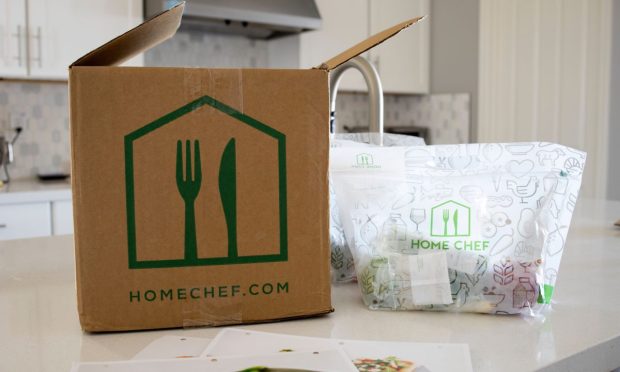Kroger Expands Home Chef as Consumers Cut Restaurant Spending

Kroger is growing its prepared food capabilities to meet consumers’ inflation-related demand for cheaper meals.
The U.S. grocer’s meal kit and heat-and-eat meal subsidiary, Home Chef, announced Friday (March 3) the opening of its largest yet production and distribution center, with the new facility set to account for 30% of all the company’s business.
“Our new facility will put us even closer to our customers, allowing us to deliver fresher ingredients and a wider range of meal options to East Coast homes,” Home Chef CEO Erik Jensen said in a press release.
The news comes as grocers seek to take advantage of consumers’ inflation-related concerns to gain share from restaurants, touting their more budget-friendly options. Indeed, PYMNTS research shows that consumers are increasingly opting for meal solutions as a way to save on quick, convenient food.
For instance, data from the study “Digital Economy Payments: Consumers Buy Into Food Bargains,” which drew from a July survey of nearly 2,700 U.S. consumers, found that 37% of consumers bought prepared food on their most recent grocery trip, up 7 points from the 30% of consumers who had done so back in November 2021.
Plus, findings from “12 Months Of The ConnectedEconomy™: 33,000 Consumers On Digital’s Role In Their Everyday Lives,” which draws from responses from tens of thousands of U.S. consumers over the course of a year, notes that meal kit subscriptions were on the rise throughout 2022. Specifically, the share of consumers who reported purchasing from online subscription services that deliver meal kits rose from 25% in December 2021 to 31% in November 2022.
Noting this increased demand, Kroger has been targeting that meal kit and prepared meal spending, as the grocer said on a call with analysts Thursday (March 2) discussing its fourth-quarter 2022 financial results.
“Our customers are looking for more ways to stretch their budget. The gap between food at home and food away from home spending grew in the fourth quarter as more customers gravitated toward affordable meal solutions that restaurants simply can’t provide,” CEO Rodney McMullen said. “Our research shows that cooking at home is three to four times less expensive than dining out. And … Kroger was there for our customers.”
Certainly, consumers are cutting back on restaurant dining. Research from PYMNTS’ study, “Consumer Inflation Sentiment: Inflation Slowly Ebbs, but Consumer Outlook Remains Gloomy,” for which we surveyed more than 2,100 U.S. consumers, revealed that, in response to inflation, 78% of restaurant customers are eating at home more.
Kroger is far from the only grocer looking to capitalize on this shift away from restaurant dining. Costco, for one, said on its earnings call Thursday that its low-priced prepared foods keep consumers coming back in the face of cost pressures. Plus, Walmart recently noted that its membership-only retail warehouse club subsidiary Sam’s Club saw has been seeing strength in prepared foods.
Plus, new prepared meal solutions are emerging to capture some of this demand for restaurant alternatives. For instance, direct-to-consumer (D2C) frozen food delivery provider Yelloh, formerly known as Schwan’s Home Delivery, is set for an expansion after 70-plus years in operation. The company last week (Feb. 28) announced a partnership with investment firm 4×4 Capital.

